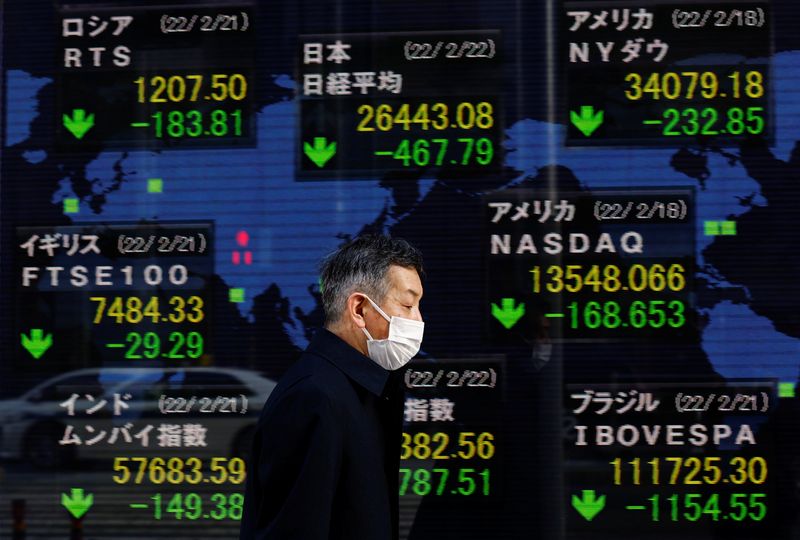Stocks trembled on Wednesday while major currencies held steady as investors were reluctant to place bets ahead of the release of U.S. inflation data that could point to the Federal Reserve's appetite for more aggressive rate increases.
The Consumer Price Index (CPI) report will be released at 1230 GMT, with markets watching for signs that inflation eased in July despite last week's unexpectedly strong U.S. jobs numbers.
The market is pricing in a 69.5% chance of a 75 bps rate increase at the Fed's next meeting . Economists polled by Reuters expect the CPI to show year-on-year headline inflation (USCPNY=ECI) of 8.7%, far above the Fed's target of 2% but down from last month's red-hot 9.1%.
Europe's benchmark STOXX index (.STOXX) fell 0.43%, following a bigger fall of 1.2% in the MSCI's broadest index of Asia-Pacific shares outside Japan (.MIAPJ0000PUS), while Japan's Nikkei (.N225) closed down 0.65%.
"I don’t think that we are through the bear market woods yet – recession risks loom and I don’t think the Fed is done with its aggressive belt tightening," said David Chao, a global market strategist for Asia Pacific ex-Japan at Invesco.
"I don’t think markets have fully discounted these variables. This week’s inflation data will certainly give us more clarity of the Fed’s near-term policy outlook."
U.S. markets looked set to open broadly flat, with S&P 500 futures down 0.06%.
The dollar was steady, having paused from a retreat that began in the middle of July. The dollar index , which measures the safe-haven greenback against six major peers, was at 106.3.
"A strong CPI print this week could mean the Fed is back to its aggressive rate hiking path, which would re-strengthen the USD," said Chao.
Euro zone bond yields held stead, with Germany's 10-year yield, the benchmark for the bloc, down just one basis point at 0.91% .
Analysts noted the U.S. data due Wednesday represent a lagging indicator that might not yet show inflation softening, and yield curves could flatten or invert further.
A flattening yield curve is usually seen as a sign of an economic slowdown and inversions as predictors of recessions. As measured by the gap between two- and 10-year yields, the U.S. curve is deeply inverted at below minus 40 bps.
Oil prices fell after industry data showed U.S. crude inventories unexpectedly rose last week, signalling a possible hiccup in demand. Brent crude futures fell 61 cents to $95.73 a barrel, while U.S. West Texas Intermediate (WTI) crude was down 70 cents to $89.82.
Gold also pared gains and was down 0.26% at $1,789.5 an ounce. It briefly broke through the $1,800 barrier overnight for the first time in more than a month.










